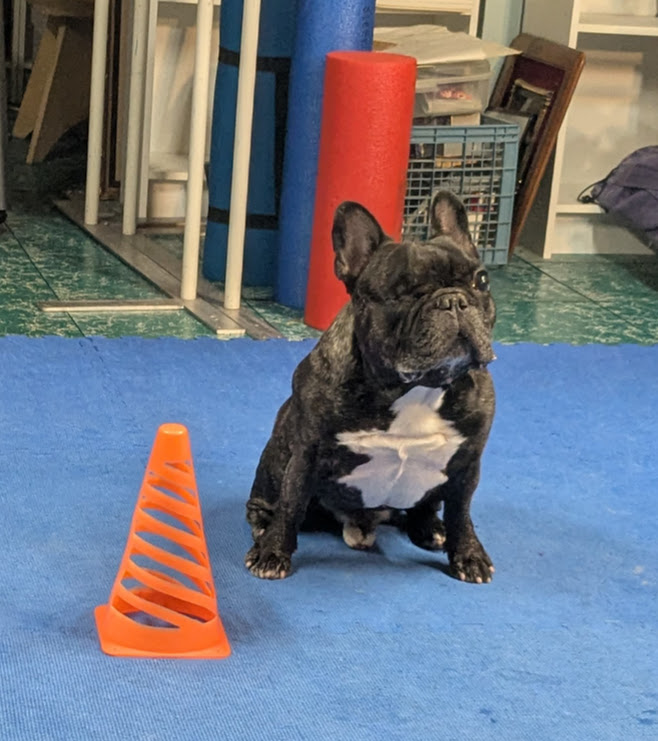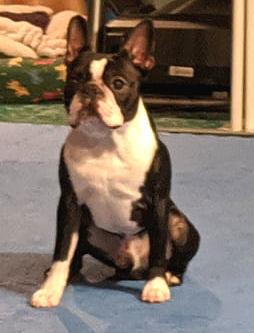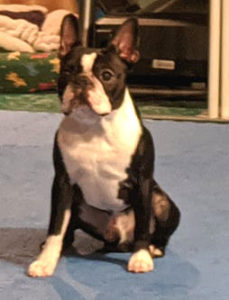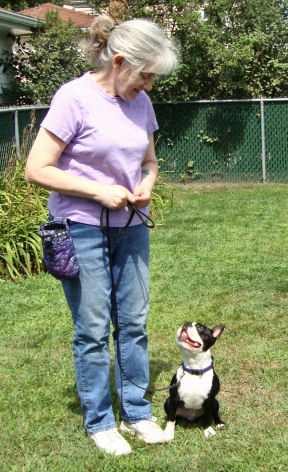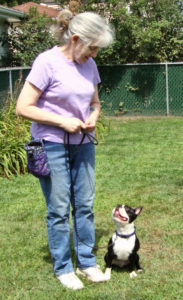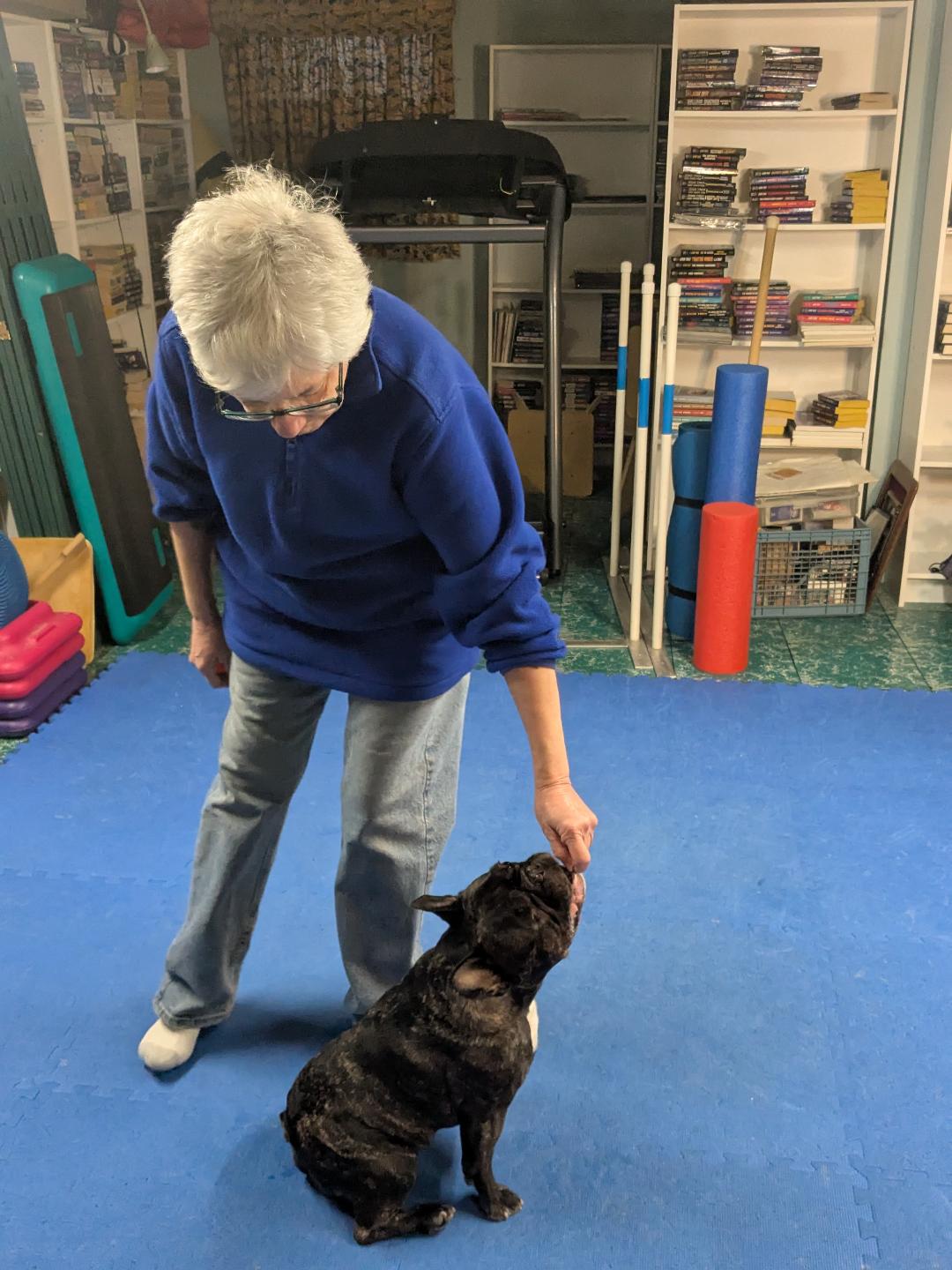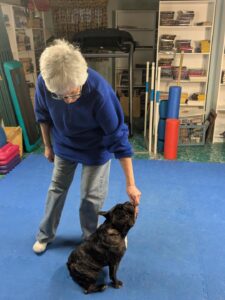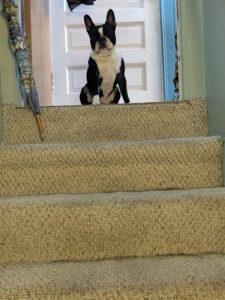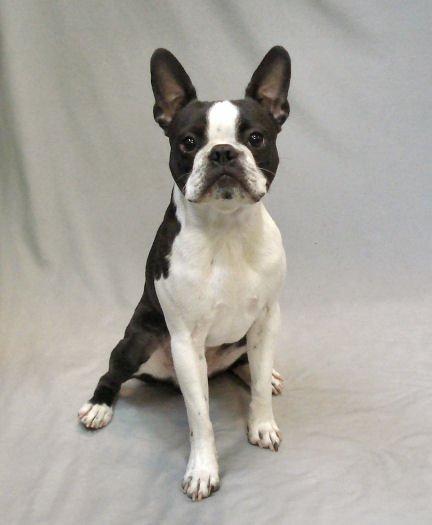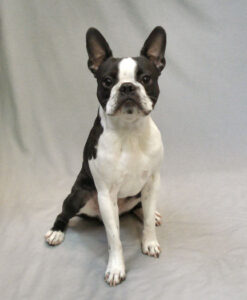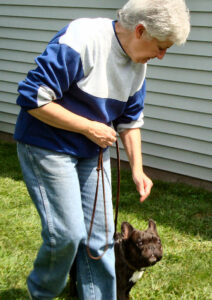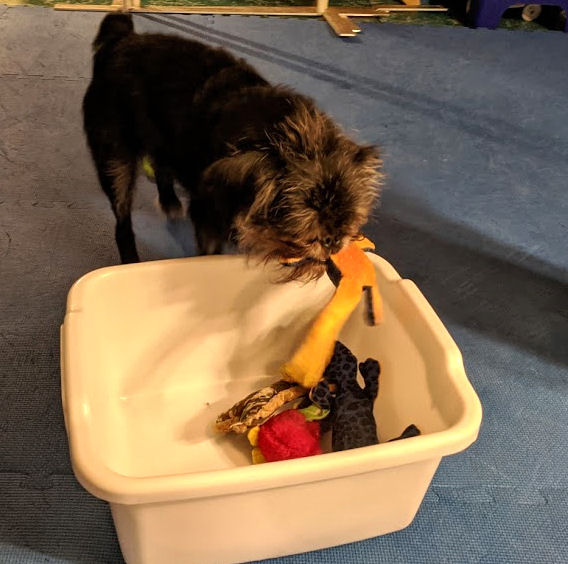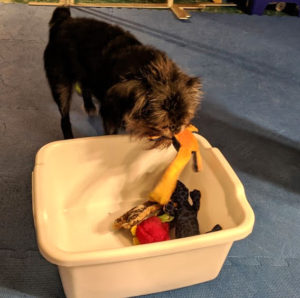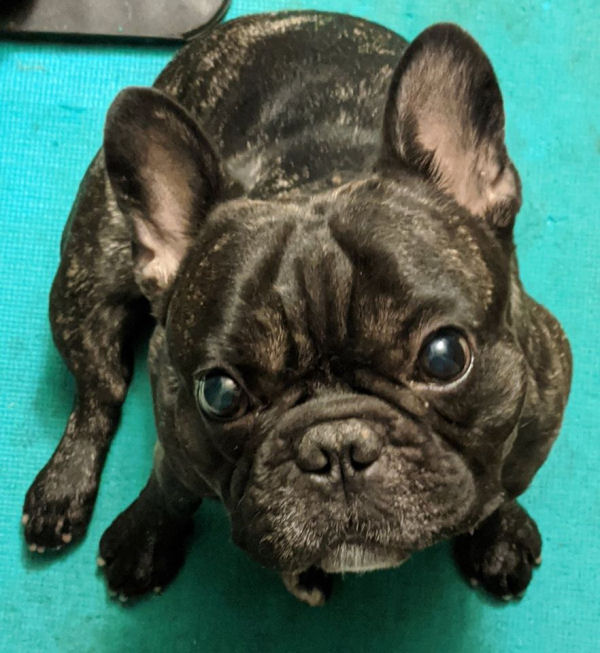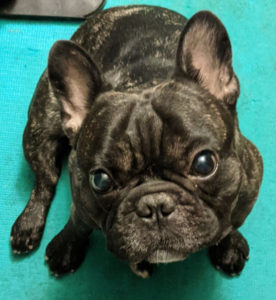Remember when you were in school and there were classes you loved, classes that were okay, and those you loathed? Your dog’s version of school is playing training games with you. There are some games they love. And others that they have a hard time with. If you want your dog to live up to their full potential, you have to play the hard training games.
Fortunately, even if you play the tough ones every day, it’s only a couple minutes at a time. The agony will soon be over. And one day, probably sooner than you’d expect, it will suddenly click for your dog and that impossible game becomes a favorite. That’s the way it happens.
Dark, dark, dark, dark. Light Bulb!
A great example is Hope’s French Bulldog Torque learning the “Send Away Sit” (#306) sign in Rally. When you come to the sign, you and your dog stop. The dog sits. Then you tell your dog to go to a pylon or cone which is about six feet away (the Send Away part). You tell your dog to “Sit!”
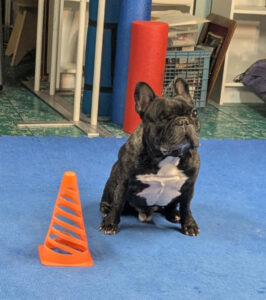
For the longest time, Torque didn’t understand it at all. Hope tried everything: a target near the pylon, a mat, throwing a treat or a toy. Torque just was not getting it. He wouldn’t go far enough, or too far. He wouldn’t sit, or moved away to sit.
It’s not like Hope pounded away at it. She’d try for a couple minutes about every other week or so. While each little session was a bit frustrating, the failure wasn’t allowed to color all of their training games. Then, after a few months of occasionally trying, it clicked. Now Torque gets it perfectly every time. It took a while, but once it did, it stuck like glue.
If it matters, keep trying
Not everybody has competition goals. Mastering a particular Rally skill may not be on your radar. That’s okay. There are everyday behaviors that are difficult for dogs, yet vital for everyday life. Jumping on people is a good example. If your dog’s idea of saying “Hi! I love you!” is to jump on someone, that’s a problem. If they’ve been doing it for a while, it may take a while to fix. But it’s worth it. Polite greetings require dogs to think, to suppress their impulses, to make good choices.
Just because something is difficult doesn’t mean it’s not worth doing. When you were a child, was it easy to learn how to ride a bicycle? Or tie your shoelaces? Did your friends or siblings have an easier time than you did? There were also things that you understood faster and more easily than they did.
Lean into the hard stuff
It’s unfortunately an absolute truth that the training games your dog understands least are the most important ones to play. This week we introduced the impulse-control game “Whatcha Gonna Do?” in our puppy class. One of the puppies got it in no time. It was almost like he’d been waiting for a chance to shine. Another puppy, who had far exceeded the first in every other game, had a terrible time. During class he showed no sign of understanding at all. And that’s the game we recommend his people play the most.
Almost all of the training games are designed to teach your dog skills that make your life together easier, happier, and more fun. Playing some of them may seem pointless when your dog just isn’t catching on. Dog training isn’t a steady upward climb. There are dips and angles, triumphs and failures. Overall, the trajectory is upwards. The training game your dog finds impossible now will be puppy’s play in a few weeks.
Keeping your sessions fast, fun, and short means there’s always another chance to have fun with your dog. If you play three training games a day (just about 15 minutes), there will be a major difference in your dog’s behavior and understanding in just a couple weeks. Prove it to yourself. Take video of a session with a difficult training game today. Play that game a couple times a week for a month. After that month, take another video and compare. The evidence of progress will be right before your eyes.

